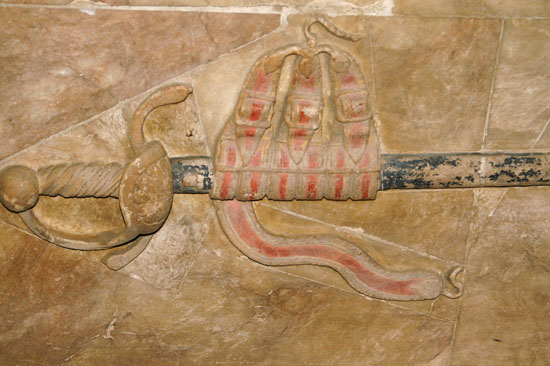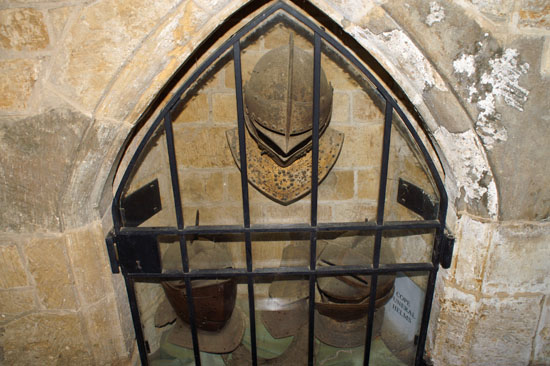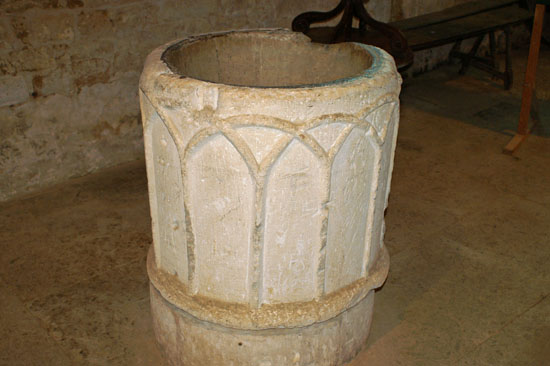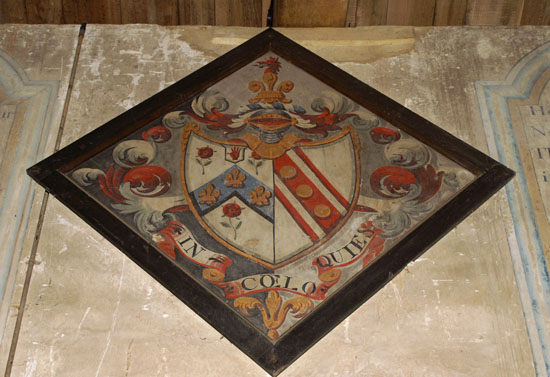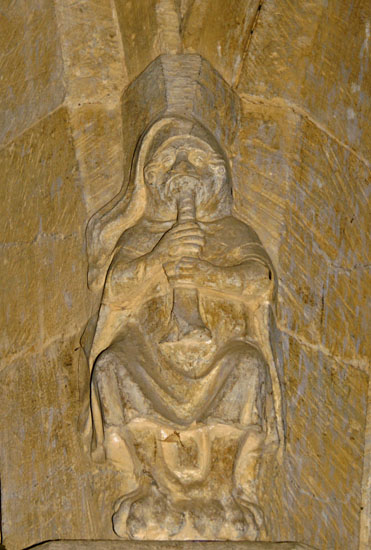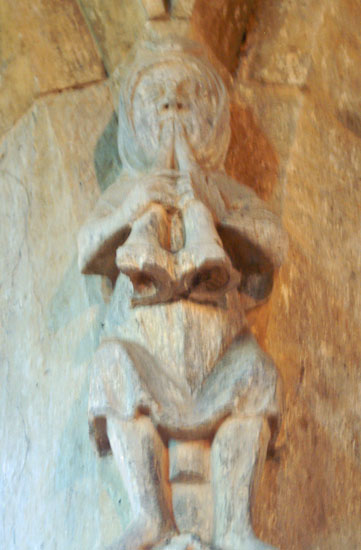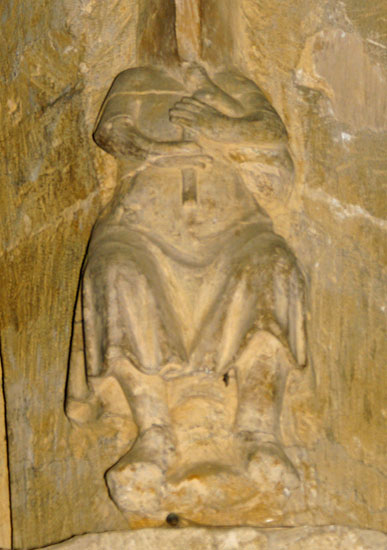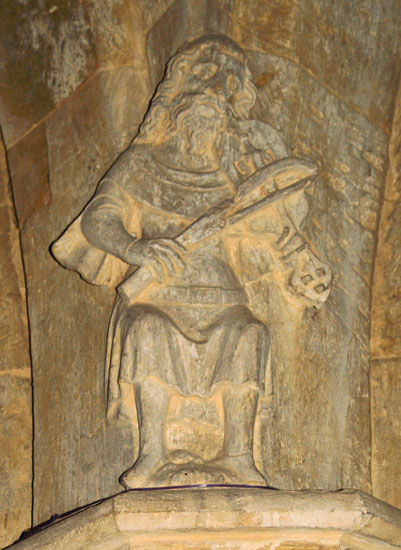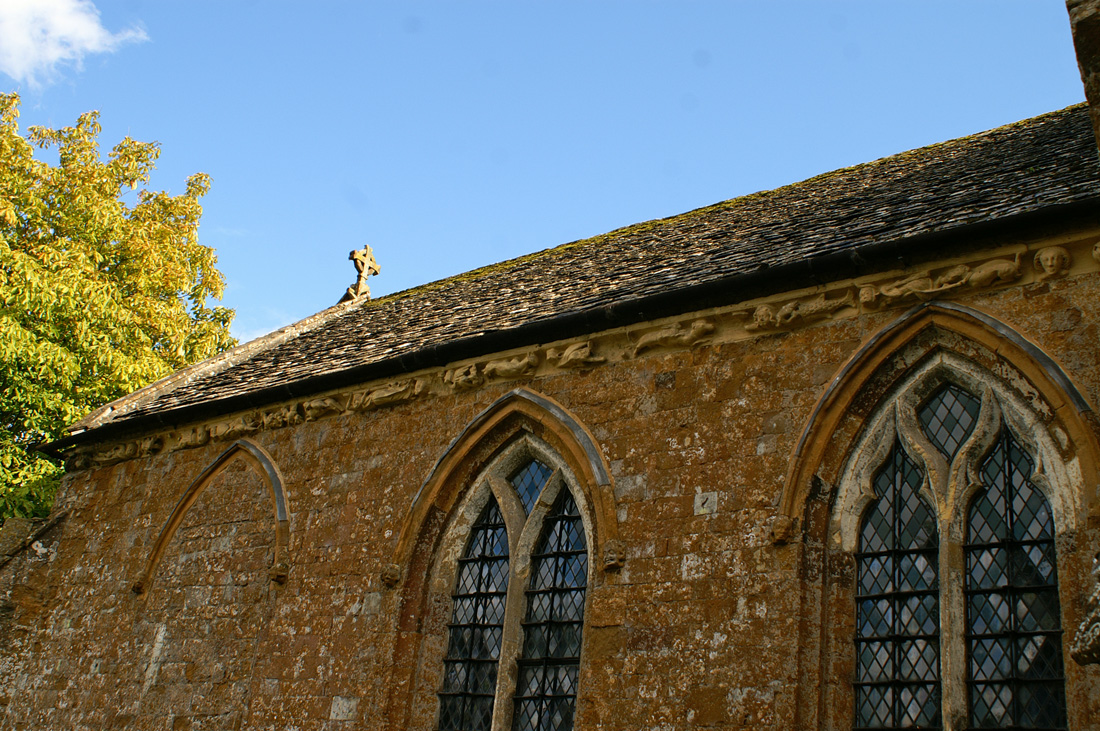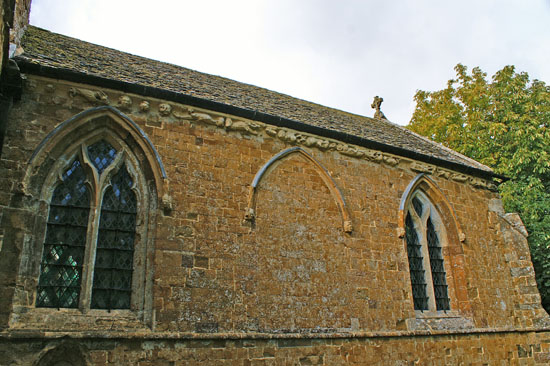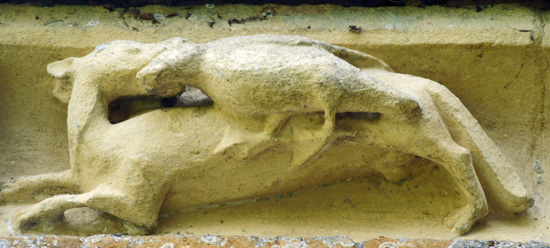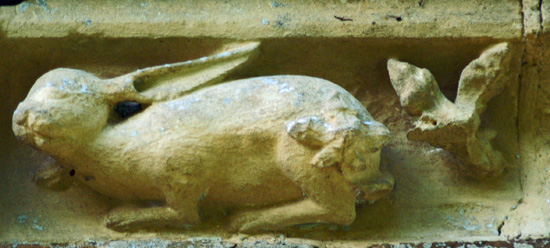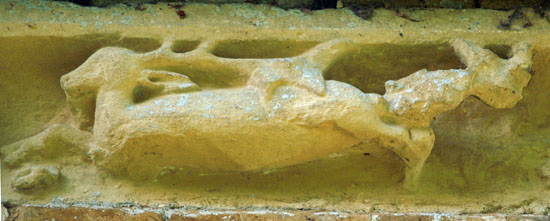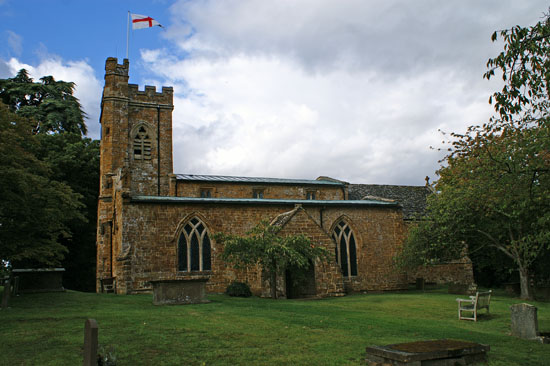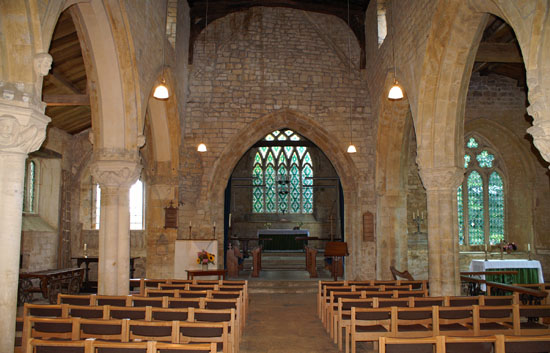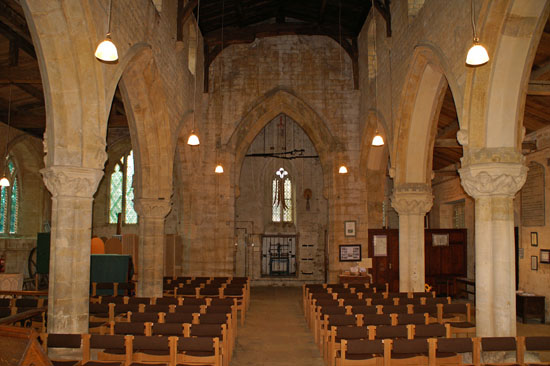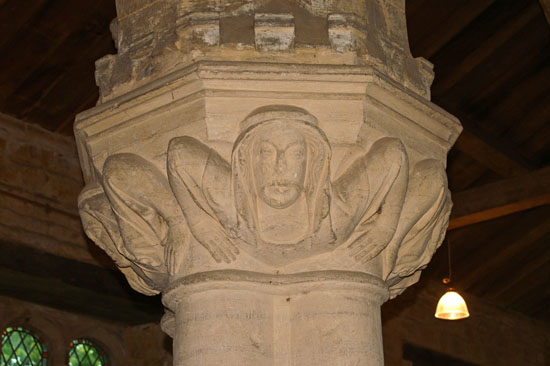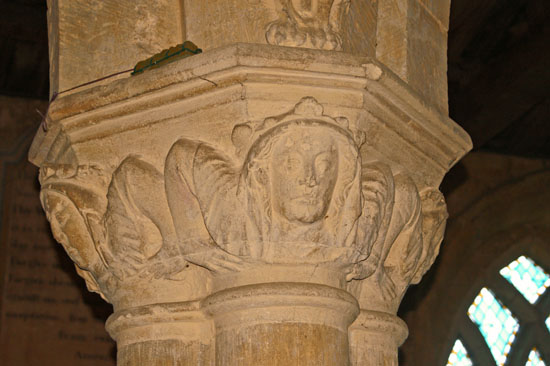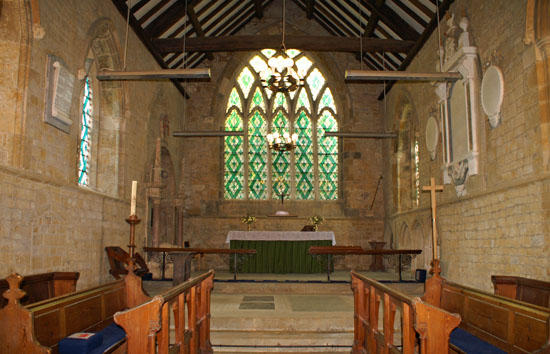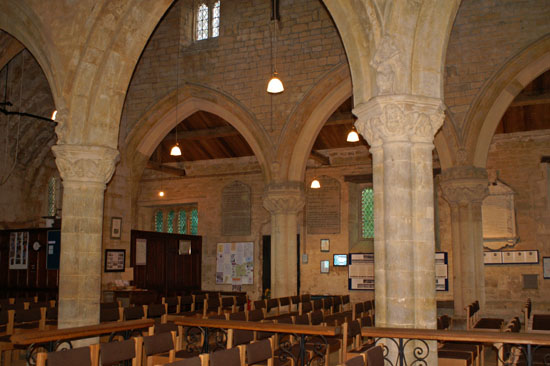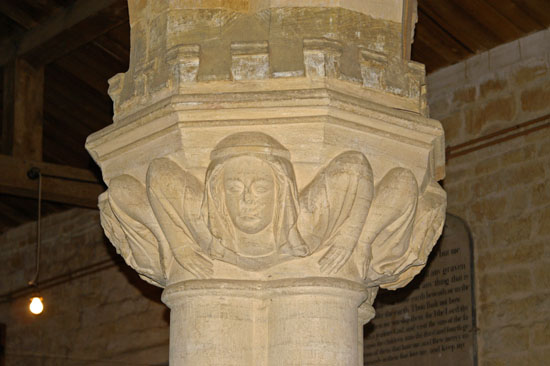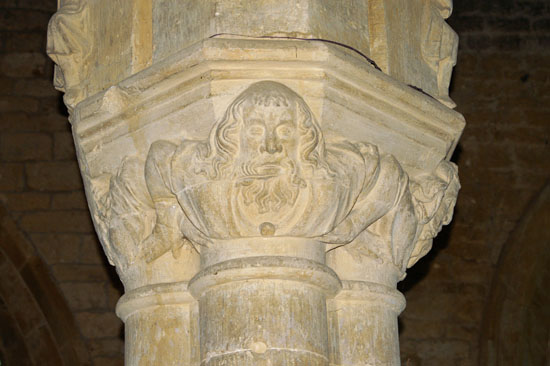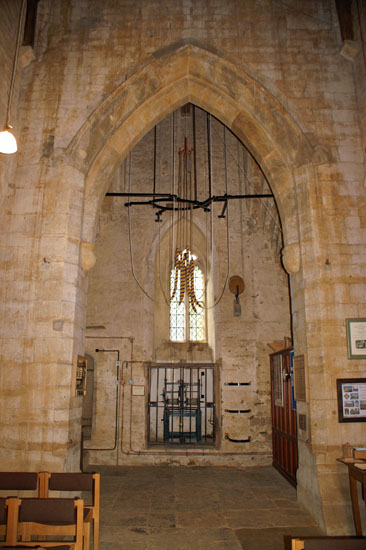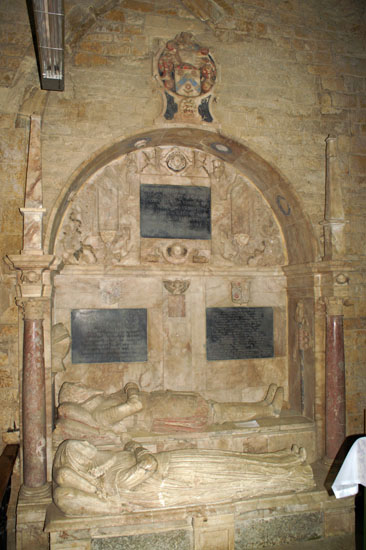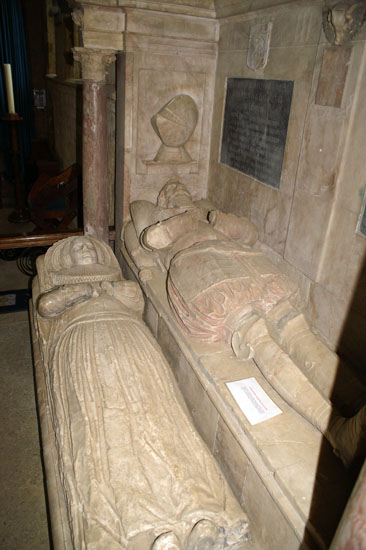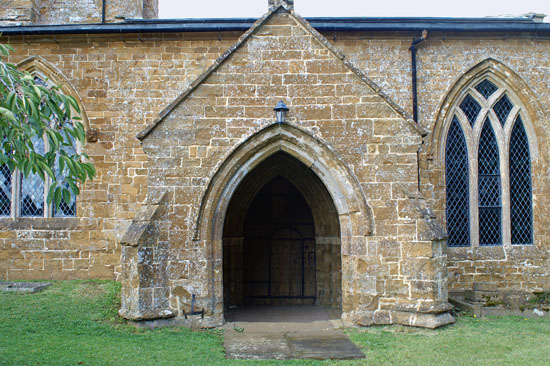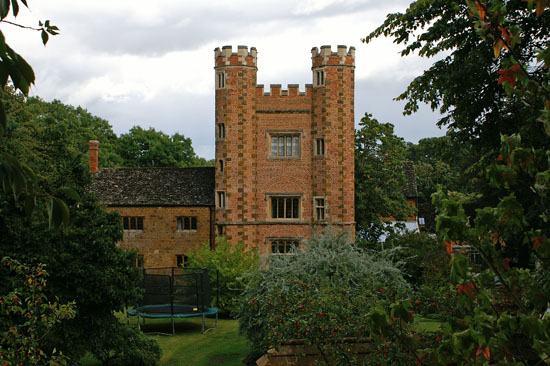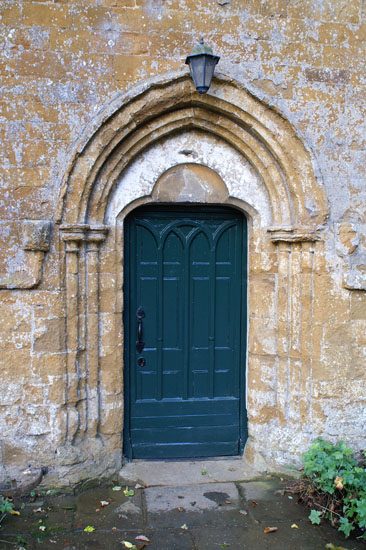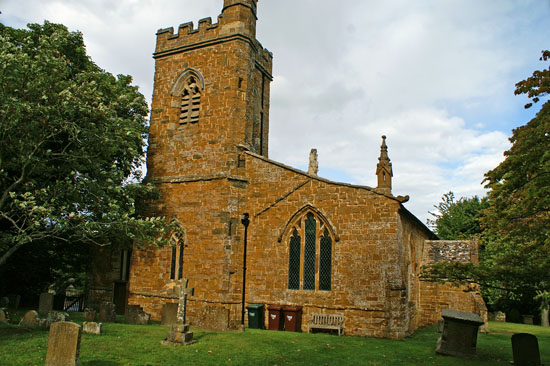|
Architecturally, Hanwell is insignificant. It’s carvings which are believed to date from about 1340 are not. The frieze, although similar in style to Bloxham and Adderbury, has a character all of its own. We don’t have the “village orchestra” here as we do in Adderbury. Nor does we have the grotesque monsters and scenes from village life we see in both Bloxham and Adderbury. It does have amusing man/animal hybrids such as are seen on Adderbury’s south aisle. This is significant because the claimed 1340 date for Hanwell’s frieze is close to the end of Adderbury’s own rebuilding in 1344. Bloxham claims a similar date. So perhaps there was indeed there was one or more carvers in common between the two churches. What is also interesting is that the Black Death hit England and halved its population in 1348. Did this man or these men survive?
Hanwell’s frieze has been restored. Inside the church there is a series of (rather tatty!) display boards showing the frieze before and after restoration and it is clear to me that the exercise was both necessary and worthwhile. A visit to nearby Alkerton Church a few weeks later was a massive disappointment because the frieze there has been weathered almost beyond recognition in most places. That frieze represented the life of Edward the Black Prince so it would be of particular historical interest. As matters stand, any restoration would be impossible unless old drawings exist because there is virtually no base from which to rebuild it. It is always slightly disappointing on an emotional level to learn that a treasure is not wholly original, but without restoration many external carvings on parish churches will in time be lost altogether. Did anyone suggest that the Mona Lisa should not be repaired when some idiot slashed it with a knife? It is a crying shame that there is no concerted campaign to protect what we have - I am sure there must be chemical agents available to reduce the effects of the weather - rather than spending huge sums of National Lottery money on preventing the sale of paintings by Dutch and Italian masters to overseas buyers. Our churches are our heritage, accessible by all both physically and emotionally: not just for the gratification of the chattering classes and the metropolitan elite. Grrrr!
Having said that there were no musicians on the frieze, I must point out that there are musicians on the south arcade standing upright above the decorated capitals. They are far more detailed than on Adderbury’s frieze (inevitably, given the small space for frieze carvings) and that they are here at all gives some indication that this was a popular local theme. There is no reason to suppose that these figures were carved by the same man or men that carved the Hanwell frieze. These musicians are not present, however, on the north arcade where small heads are preferred. The capitals themselves are also castellated on the north side, but not on the south. Thus we have quite different styles on the north and south arcades. We should not be too surprised: even if both were built as part of the same reconstruction program, one aisle may have been completed before the other, allowing fashions or the whims of the churchwardens to change.
A final word on these Oxfordshire “School” carvings. At Hanwell the frieze carvings are on the chancel walls. The capitals with the linked arm figures are on the aisle arcades. This further emphasises the fact that these features were not carved concurrently, although how far apart they would have been nobody can know. At Adderbury the frieze is on the two aisle walls and the tower, whereas the linked arm figures are on the arches that connect the more recent aisles to the more ancient transepts. I use this as further evidence that we can make no assumptions as to whether carvings at this group of churches were produced by the same men - even at any individual church.
Hanwell is charmingly situated next to Hanwell Castle, built by William Cope in 1498. His descendant Sir Anthony Cope was a leading Puritan who was briefly imprisoned in the Tower of London in 1587 by Elizabeth I. He managed to navigate these turbulent times and James I visited Hanwell in 1605 and 1611. The alabaster tomb of himself and his wife are a feature of the church. Hanwell was embroiled in the Civil War. Royalist soldiers are believed to have prayed here before the indecisive Battle of Edge Hill in 1642. Hanwell Castle was captured by the famous Roundhead General William Waller just before the Battle of Cropredy Bridge in 1644 and troops and horses occupied both village and church.
|
